When it comes to speakers, the wide range of audio-video technology on the market might make your decision difficult. Knowing how long do speaker crossovers last can help you make the best purchasing decision possible.
Maybe you’ve had your eye on a great deal on a second speaker, or you just want to know if your present speakers sound as good as they did when you first bought them. For years, many audiophiles and music aficionados have wondered how long speaker crossovers endure and if speakers degrade or become bad.
What’s a Crossover?
The speaker crossover is a hidden component found in almost every loudspeaker. Full-range speakers and speakers that employ software to isolate frequencies are the sole exceptions. Crossovers may also be found in amplifiers and receivers, particularly in home cinema receivers with a separate subwoofer for bass playback from the satellites. Aside from this specialist technology, any loudspeaker with more than one driver in its enclosure necessitates the use of a crossover.
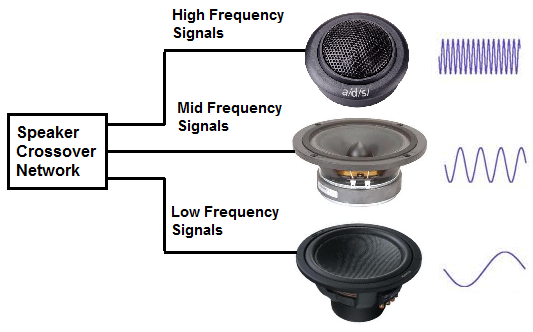
A crossover divides an unfiltered audio stream according to a specified higher or lower threshold, as the name implies. Each driver receives the signal range that it was designed to generate from the speaker crossover. For example, crossovers ensure that tweeters only get the highest frequencies and not any of the lower frequencies that this driver was not designed to reproduce. As a result, a crossover mimics a loudspeaker’s nervous system.
What is the Purpose of a Speaker Crossover?

One driver and speaker cannot handle the complete audio frequency range of around 40 Hz to 20 KHz. In reality, directing the full spectrum to a single driver and speaker results in less optimal and distorted output. The speaker drivers are tuned to a certain spectrum of audio frequencies.
If you use them outside of this range, you risk damaging the driver or causing significant distortion, not a good thing! Crossovers are a frequency-specific combination of resistors, inductors, and capacitors in a specified array. A high pass filter stops all mid-range and low-frequency sounds while allowing only high-frequency impulses to get through. A low-pass filter eliminates all high-frequency impulses while allowing only low-frequency signals to flow through.
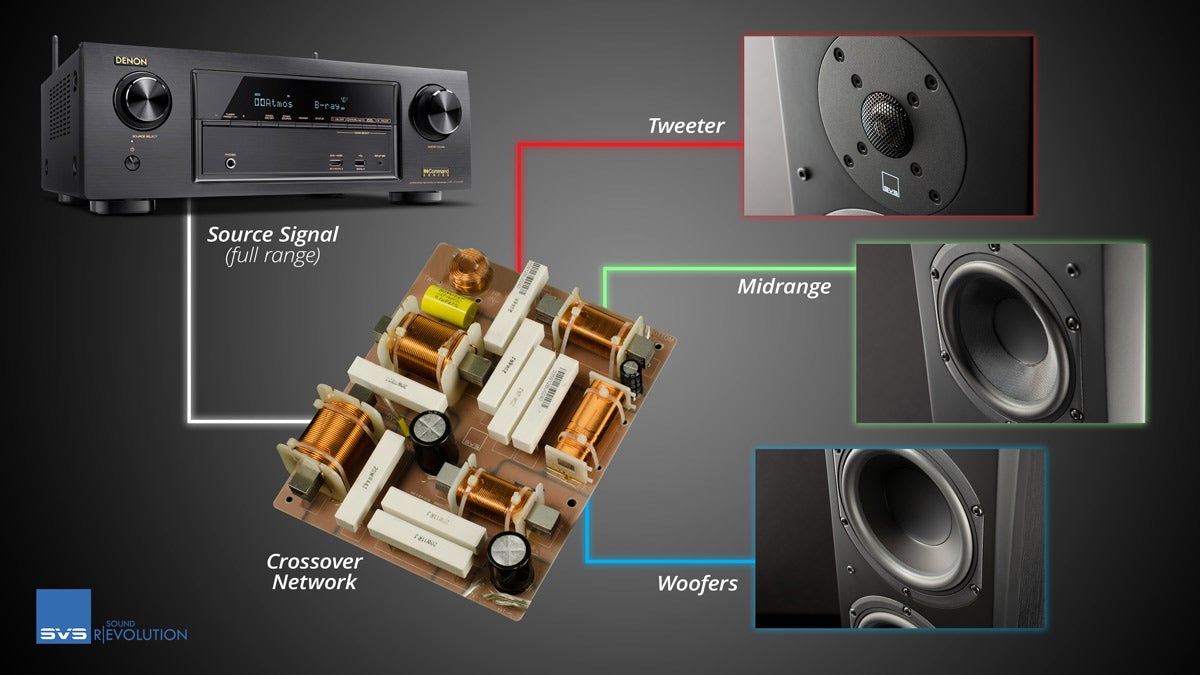
The crossover network is located between the amplifier and the speaker and does not normally require any extra power to function. Printed circuit boards are used to mount the bulk of crossover networks. Others are hard-wired from one component to the next, then secured to the speaker cabinet with a Ty-Rap® cable tie.
Speaker Crossover Network
2-way
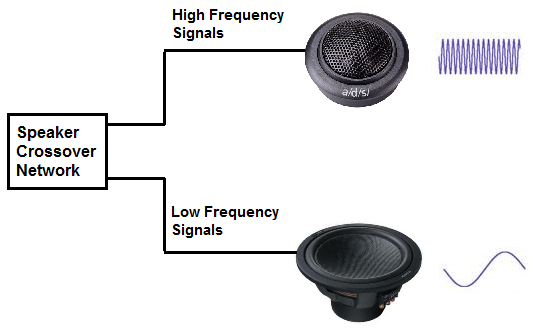
3-way
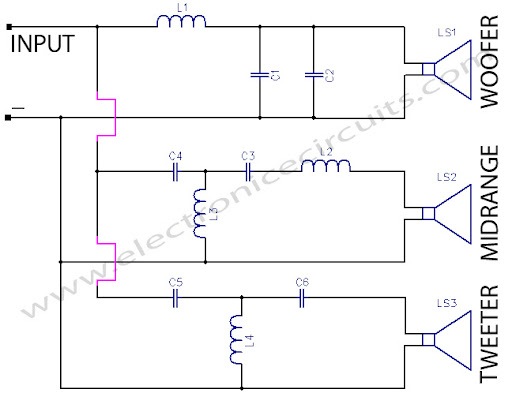
What’s Exactly Inside a Crossover?
Inductors and resistors
Most resistors and inductors have set values, so replacing them while upgrading isn’t necessary unless they’re broken. The values, on the other hand, should be validated and tested. When selecting resistors for new designs, keep non-inductively wrapped resistors in mind. A foil-wound inductor is the finest choice since it has a low series resistance and excellent inductive characteristics.
Different Audio capacitors
This technical bulletin focuses on capacitors. Electrolytic, ceramic, metalized film and film and foil are the fundamental four kinds of capacitors.
Electrolytic capacitors
If you can handle its wear & tear situation and the problem is found to be the one and only electrolytic capacitor then you must utilize OCR Capacitor Assortment Box
- Wet electrolytic capacitors
- Etched Style Aluminum Electrolytic Capacitor

- Plain Foil Style Aluminum Electrolytic Capacitor
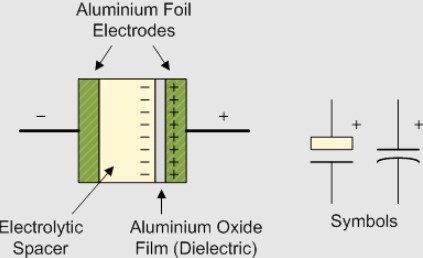
- Etched Style Aluminum Electrolytic Capacitor
- Solid polymer electrolytic capacitors
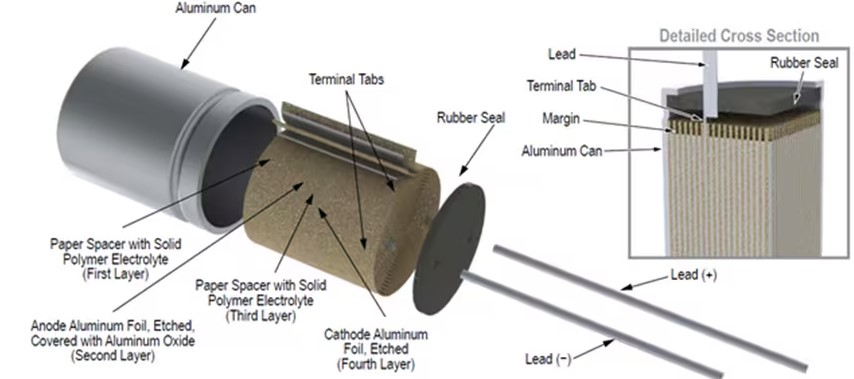
- Non-polar electrolytic capacitors

Ceramic capacitors
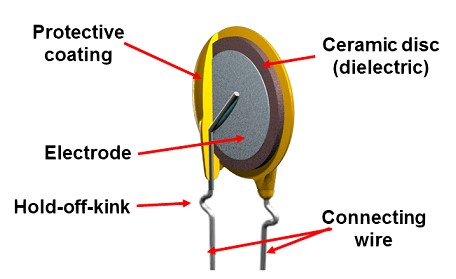
Film Capacitors
Film capacitors come in two varieties: film and foil, as well as metalized film capacitors. They are the ideal choice for using in audio equipment’s crossover network whether it’s 2-way or 3-way.
- Film and Foil Capacitors
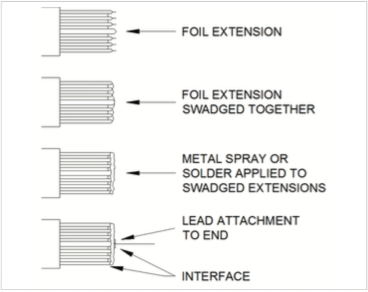
- Metalized Capacitors
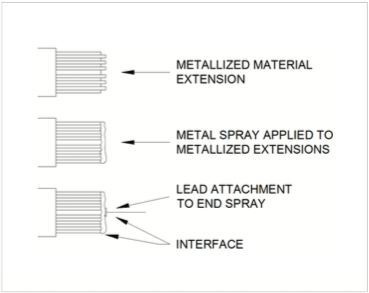
What does deteriorate in a speaker?
Speakers deteriorate with time. Component speakers, such as the surround, cone, crossover capacitor, and ferrofluid in certain tweeters, degrade with time, decreasing the speakers’ overall sound quality.
- Not all speakers are made in the same manner. The materials used in the building of the speaker’s components are chosen by each speaker maker. The speaker’s budget and ultimate cost determine the majority of material choosing options.
- It is undeniable that some materials are more durable than others. As an example, butyl rubber is a considerably superior material for speaker surrounds than foam, as I have indicated. This is because it will take a much longer period to decay.
- In the same way, some manufacturers use low-cost capacitors in their crossovers, which break faster than high-quality, expensive capacitors. For a brief time, cheap capacitors will perform well. Because of the materials used, expensive and high-quality capacitors have a much greater construction quality and degrade slowly.
The Solution for a Better Crossover Performance
The Right Frequency Band should be sent to the Right Driver
The function of a speaker crossover may be plainly illustrated using a conventional 3-way tower speaker as an example. Three distinct drivers are included in the enclosures of 3-way loudspeakers: a bass woofer for the lowest frequencies, a midrange driver for the middle frequencies, and a tweeter for the highest frequencies.
Despite this, the entire loudspeaker gets a single, unfiltered audio stream. Because sending bass frequencies to a tweeter would strain it and cause distortion, and a subwoofer won’t be able to reproduce treble tones, it’s important to split this signal as accurately as possible so that each speaker only receives the signal it can best reproduce.

The key is a well-designed crossover. Some high-end loudspeakers have high and low pass filters that may be used to tune the crossovers separately. If you are confused that your right driver is not getting the right frequencies then you can utilize an adjustable treble/bass frequency divider distributor for your 2-way component system.
Crossover Caps Issue
When it comes to caps deteriorating, electrolytic varieties are the most common, and they’re frequently found in equipment that runs at a greater voltage than speakers. (For example, amps, power supply bypass, and so on.) In that situation, electrolytes should be replaced.
Better still, get rid of them completely and replace them with oil or film covers. Here’s is a pro tip replace your tweeter component and there you go. For this purpose, you can rely on a tweeter dome manufactured by Skar
Avoid Resonant Frequencies by improving crossover
Crossovers prevent loudspeakers from reaching their resonance frequencies, in addition to assisting in the creation of an ideal sound. The frequency at which the enclosure around one or more drivers vibrates is referred to as this. Resonant frequencies can cause certain tones to be replayed louder and with greater distortion than others. A speaker crossover can reduce the frequency of the sound that creates these vibrations.
Replacing your Speaker’s other weary Parts
When your speakers start to break down, it doesn’t always imply they’ve reached the end of their lifespan. Every component of the speaker that degrades over time may be replaced with fresh components. As a result, if your speaker sounds bad, don’t throw it out right away. One of the easiest speaker replacement parts to find is the surround. Naturally, this is because the speaker’s region is the one that degrades the most quickly and often.
With the exception of the crossover, how long do speaker parts normally last?
Speakers can last anywhere from 10 to fifty years, or even more, before they start to exhibit signs of wear. The material used in its construction, the location in which it is utilized, and the power amp that powers it all have a role in how long a speaker lasts.
Certain speakers have a superior build quality and can withstand a wider range of environmental factors for a longer amount of time than the speaker cabinet. When exposed to harsh circumstances, speakers made of low-quality materials will rapidly fail to perform.
In short, environmental factors have a considerable influence on a speaker’s performance length. The materials used to make the speaker, on the other hand, are crucial in deciding how long it will last before decaying.
How Do I Keep Dust Off My Speakers?
As you may be aware, dust is the number one enemy of the speakers. Dust gets into the wire connections, causing the electric signals between the source and the speaker to be disrupted. You must clean them regularly and with extreme caution. Cleaning may be done with dust pads, dry towels, and air canisters. The use of liquids, on the other hand, is not advised.
How to troubleshoot the Crossover?
If you’re having problems and wish to reach out to us or fix your system on your own, start by running Crossover. Then, from the Help menu, choose System Information. This will provide you an instant report on what Crossover sees in your system, including any anomalies discovered by our diagnostic tool.
Keeping Speakers in Good Shape?
Here are some suggestions for keeping your speakers in good working order for a long period. If you follow these guidelines, your speakers will sound as good as new for a long period before they need to be replaced.
- Keep speakers away from direct sunshine and heat.
- Maintain the speakers in a dry, non-humid environment.
- Maintain a dust-free environment for the speakers.
- Make sure the speakers are sufficiently ventilated.
Does time affect the Speaker’s life?
Yes, to put it bluntly. Speakers will deteriorate over time if they are used often. Surrounds, cones, crossover capacitors, and ferrofluid in particular tweeters degrade with time, lowering the overall sound quality of the speakers.
Conclusion
Modern high technology has become an inextricable component of human life today. Many individuals have become hooked to and reliant on technology. Some audiophiles, for example, like their Hi-Fi systems and are continually updating them. Speakers degrade with age in general. The speaker’s internal components are not unbreakable. They also degrade the sound quality of the speakers as they age. When a speaker declines, however, this does not imply that their life is finished. There is a replacement part for almost every worn-out component of the speaker.
The reality is that all technology, from the most basic to the most advanced, needs correct use and upkeep. You may enjoy your gadget for decades if you read the technical instructions attentively while using it, as most audio speaker owners do.
Best Speaker Crossovers available right now in the market:
- Rockville RX230 2 Stereo/3-Way Mono Crossover
- Pyle Electronic Crossover Network
- Audiopipe 3-Way Crossover
- Lanzar 2 And 3 Way Active Crossover With Bluetooth
- AUDIOPIPE CRX-203 2-Way 4-Ohm Car Audio Passive Crossover
- Rockford Fosgate PP4-X Punch Pro 4-Ohm Passive Crossover
Check out more from the Blogs Section
- How to Clean a Bluetooth Speaker
- How to Clean the Speaker Grill?
- How Does a Wireless Subwoofer Work?
- How Does Wireless Surround Sound Work?
- 2-Way vs 3-Way Car Speakers Which is Better?
- Are Component Speakers Better?
FAQs – How Long do Speaker Crossovers Last
How long do crossover capacitors last?
Electrolytic capacitors in crossovers typically last around 15 years. Over time, they tend to dry out, leading to a loss in capacitance, which can cause the filters to shift frequency. Fortunately, replacing them is relatively straightforward.
Is upgrading a speaker crossover worth it?
Upgrading speaker crossover components can often enhance the transparency and detail richness of your speakers. However, the exact outcome may vary depending on the specific components used.
What is the life expectancy of a speaker?
Speaker lifespan can vary significantly. Some speakers might fail within 5 years, while others can last over 100 years. Pay attention to the surround edges—foam surrounds usually degrade within 10-20 years, so avoid them if you prefer not to repair your speakers.
How long should a good pair of speakers last?
With proper care, a good pair of loudspeakers can last 20-30 years or more. Check the surrounds on the woofer periodically, especially foam surrounds, which may need repair after 15-30 years.
Is a 120Hz crossover too high?
The recommended crossover frequency for most systems is 80 Hz (the THX standard). However, smaller speakers like on-wall or compact satellites may require a higher crossover frequency, such as 150-200 Hz, while mid-size bookshelf speakers typically need 80-100 Hz.
Do active speakers need a crossover?
Yes, active speakers use crossovers. Unlike passive speakers, active speakers have individual amplification channels for each driver, providing better control and power distribution.
Does increasing the crossover frequency increase volume?
Yes, adjusting the crossover frequency upward can make the system sound louder, as more mid-bass frequencies get amplified.
What is the crossover frequency for bass?
For home theater systems, 80 Hz is the recommended crossover frequency for a subwoofer, but you can adjust it between 40 Hz and 250 Hz to suit your preferences.
Do tweeters need crossovers?
Yes, crossovers are essential for directing the correct frequencies to tweeters, midrange drivers, and subwoofers, ensuring optimal performance from each speaker element.

